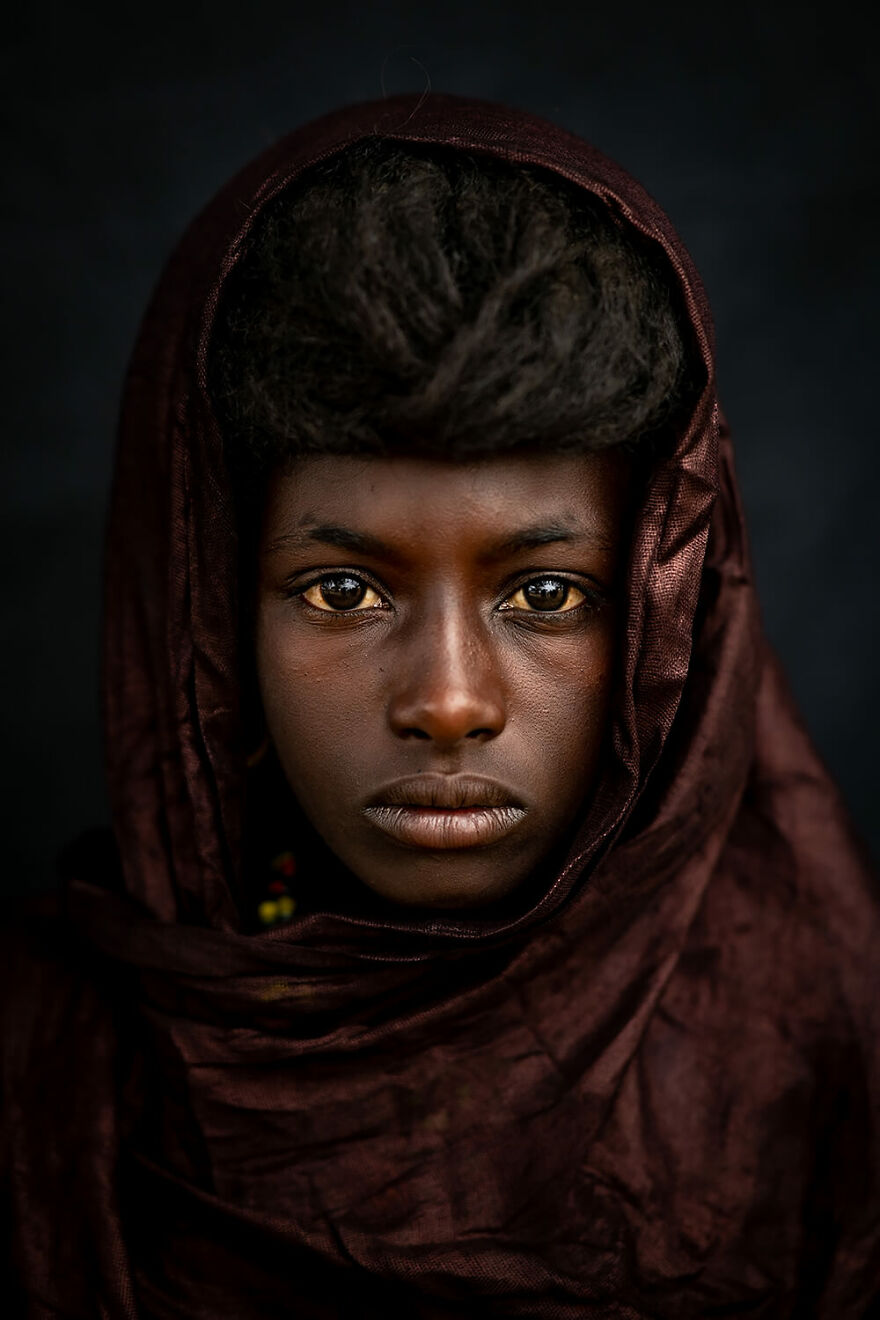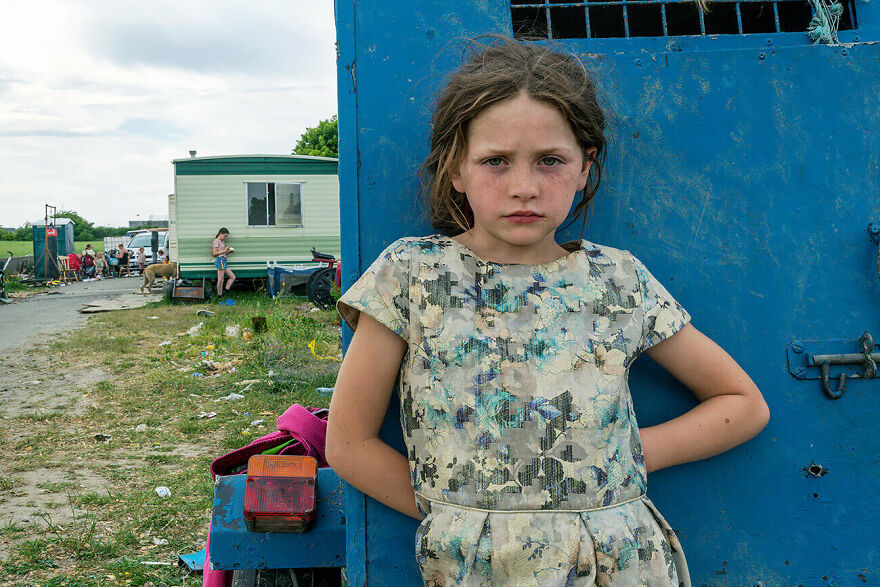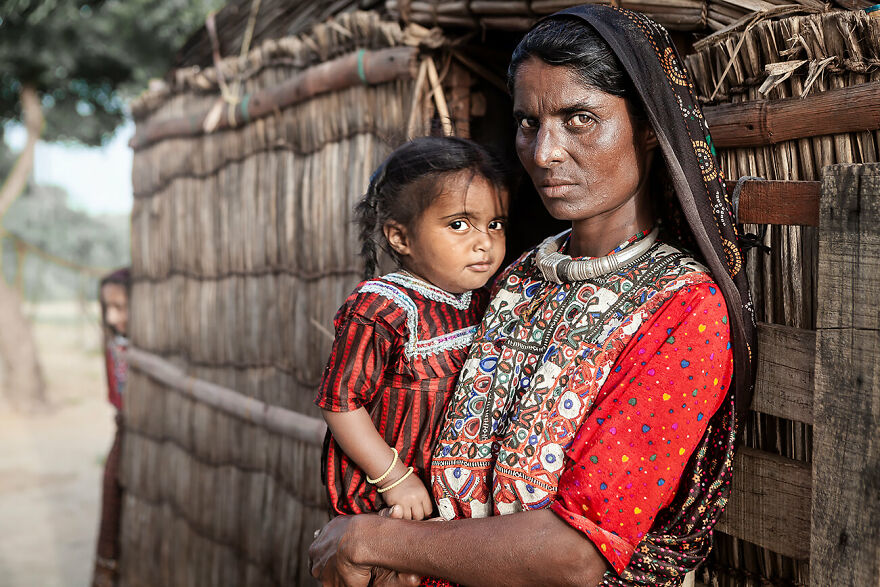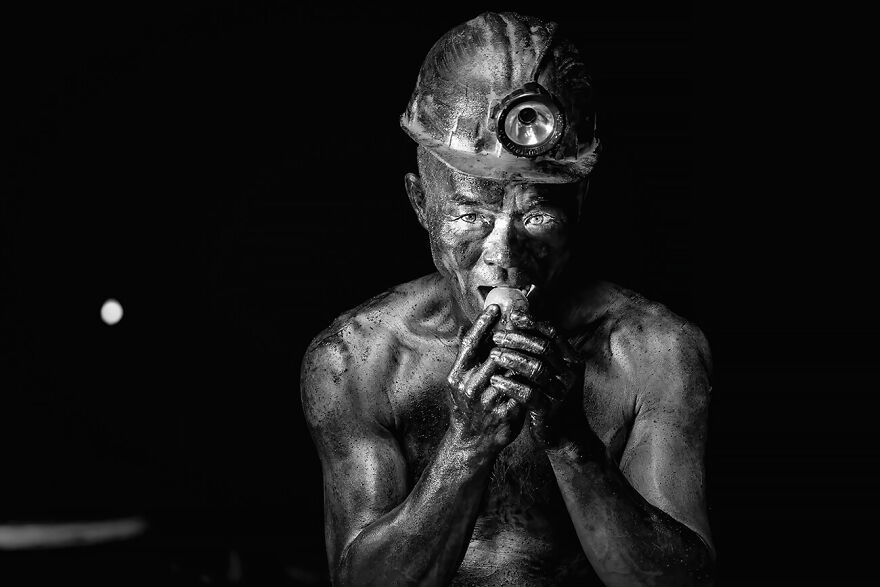We’re delighted to reveal the names of the 25 talented photographers who won “AAP Magazine #31: Portrait”. They come from 14 different countries and 4 continents.
The top 3 winners will be awarded $1,000. All winners will have their work showcased in the All About Photo Winners Gallery, and published in the printed issue of AAP Magazine #31 Portrait.
Selecting the winners was certainly not an easy task, but in the end, we hope you will all enjoy this collection of captivating portraits!
“Nomads Rose (Wodaabe Girl)” By David Dhaen (Belgium)

“It’s a picture I have taken at the Gerewol festival in Niger. I was lucky to be one of the few that attended this beautiful festival, where the Fulani gather. I saw this beautiful girl walking and I asked if I could take her pic. She said yes. I have a few of pictures of her. The gaze she gave me here on this picture, took my breath away. The serene beauty she is. With those eyes and skin. A real Nomads Rose.”
Henry Cartier-Bresson wrote: “The most difficult thing for me is a portrait. You have to try and put your camera between the skin of a person and his shirt.”
Portrait photography is strengthened by a wide variety of forms and methods, ranging from identifying the most sensitive approach to capturing emotions (including its potential to heighten the model or educate the audience). It goes beyond set studio photographs or ordinary family portraits to become a genre in its own right, allowing photographers to express their full creative potential.
“The Lunar Compass” From The Series “Shades Of White” By Nicola Ducati (Italy)

“The thousand shades of white told through a trip to the Yamal, the icy Siberian peninsula in the far north of the Russian Federation. This land is inhabited by the Nenets people, nomadic reindeer herders who, guided by the seasonal cycles and the needs of their herds, migrate incessantly in an infinite circle of movements between ice, frozen rivers and neverending winds in search of new pastures in the most remote tundra. The hostile environment did not stop their innate adaptability and gave them prosperity for millennia.”
“Biddy, Tipperary, Ireland 2020” From The Series “Mincéirs” By Joseph-Philippe Bevillard (Ireland)

“Irish Traveller Biddy leans against a horse transport box for the photograph. She lives in a 3-berth caravan on the roadside campsite with her parents and ten other siblings.
In 2009, I started photographing the Travellers who are an ethnic group at a horse fair in Ireland. I returned to the horse fair the following year to meet them again and to give them some photos I had taken. They gained my trust and invited me to photograph their families and other clans. I am intrigued by their nomadic lifestyle so I decided to visit their caravans, halting sites and roadside encampments. In March 2017, Irish Travellers group have been formally recognized as an ethnic group. Today, they are still facing racism, discrimination, hardship by society and high suicide rates. Travellers are very proud of their culture. I want to represent these people through my photographs. My goal is to continue to work with these families as well as other members that I encounter, and perhaps let the settled people have more understanding of their unique culture.”
A portrait can elicit a variety of responses, including those that describe, reveal, embellish, question, and unsettle. However, if a portrait has a thousand faces, we could only display a few of them, thus in this new issue of AAP Magazine, 25 photographers from 11 different countries and four continents share their perspectives.
Each one of them reveals their personal narrative and different approach to portrait photography.
“Forgotten Worlds – The Living Tradition Of Kutch, India” By Eliane Band (Brazil)

“I arrive, dazzled, at a settlement with 20 families from the Jat Fakirani community. In an increasingly pasteurized world, I am moved by the treasure of these moments. In every detail, I see the symbols of a culture that took millennia to form and is rapidly disappearing. From its magnificent traditional houses called PAKHO, through traditional clothing, its intimate relationship with animals, ancestral knowledge, everything is rare, unique and in the process of disappearing
The little girl – she’s not sure if she should smile (see her mom) but the whole situation is getting the best of her and she can’t help it. Here it comes. . .
The Winner: The Series “Perspective” By Nanda Hagenaars (The Netherlands)

“Portrait where I shift my perspective and try new ways of looking and photographing. Squeezing one eye, finding composition and contrast.”
The Winner of AAP Magazine 31 Portrait is Nanda Hagenaars (The Netherlands) with the series “Perspective“. The Second Place Winners are Anna Hayat and Slava Pirsky (Israel) with the series “Alex“. The Third Place Winner is Matt Findley (USA) with the series “Anomium“.
The other winners featured in the Merit Award’s Gallery are :
Lisa McCord (USA), Alain Schroeder (Belgium), Erberto Zani (Switzerland), Lori Pond (USA), Frank Baudino (USA), Charles Shotwell (USA), Roberta Vagliani (Italy), Hugo Thomassen (Netherlands), Annemarie Jung (Luxembourg), Ian McFarlane (USA), Nicola Ducati (Italy), Prescott Lassman (USA), David Dhaen (Belgium), Emily Fisher (USA), Laurie Freitag (USA), Marc Gaillot (France), Joseph-Philippe Bevillard (Ireland), Stephen Hoffman (USA), Christian Bobst (Switzerland), Rossi Fang (Taiwan), Eliane Band (Brazil) and Stephanie Eley (USA).
The Series “Mercury Poisoning In Indonesia” By Erberto Zani (Switzerland)

“Naomi, 5 years old, was born with hydrocephaly. At age of 20 days, she was adopted by Wisma Kasih Bunda Foundation (Semarang, East Java, Indonesia, 2023).
Minamata’s disease is caused by chronic mercury poisoning. This metal, used in hundreds of illegal gold mines in the forests of Java, Indonesia, is contaminating the environment. Miners, who have worked for years in contact with mercury, have developed neurological degenerative diseases. But the spillage of gold mining waste has contaminated also the aquifers upstream: the villages downstream from the mines, have for years used water with mercury for domestic use and to irrigate crops. On Java Island, are dozens of cases of poisoning: pregnant women have passed mercury to the fetus without their knowledge, causing irreversible damage to the unborn child with morphological and anatomical abnormalities. The disease is manifested by neurological problems, difficulty in movement, muscle weakness, visual, auditory, and cognitive deficits, and hydrocephaly. Paralysis or coma can also occur until death. This photo is a part of the long-term project Venoms on the subject of pollution created by humans.”
“The Right To Know” By Roberta Vagliani (Italy)

“Nelson Mandela said ‘Education is the most powerful weapon you can use to change the world’. This image was taken in a school in Zanzibar, where there are no desks, chairs or school supplies. All these little girls own is a notebook and their own memory. Knowledge is passed on to them by a single master. In every person, there is the possibility to transform the world.”
“I See You” By Rossi Fang (Taiwan)

“A break moment for the underpass worker. Eating snacks is a short time to relax.”


